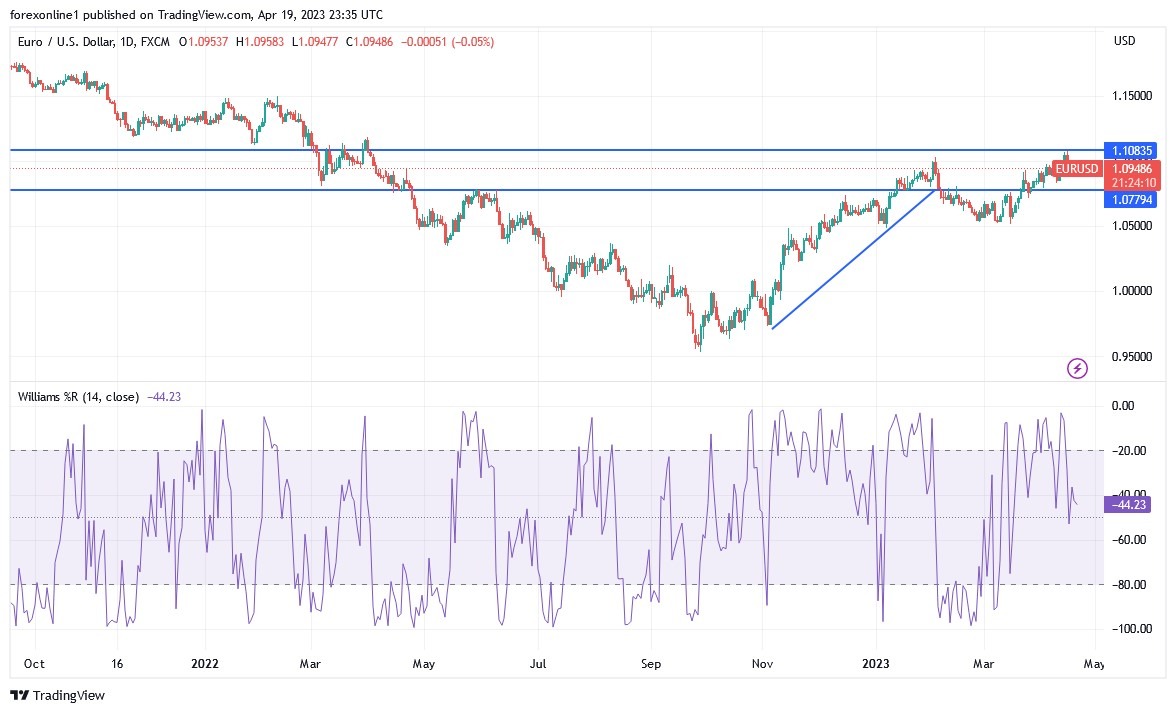For four consecutive trading sessions, the price of the EUR/USD currency pair settled in a narrow range, with a bearish tendency, that affected the threshold of support 1.0900. The bulls were unable throughout those sessions to return to the vicinity of the psychological resistance level 1.1000, and settled around 1.0955 at the time of writing the analysis. This cautious performance comes at a time when markets and investor sentiment interact with signals from global central banks about the future of tightening.
In general, investors take a wait-and-see attitude before earnings reports and potential moves by central banks. The news that Chinese economic growth accelerated in the last quarter, to 4.5%, did not have much impact on stock prices. While consumption and retail sales grew, other indicators, such as industrial output and fixed asset investment, were weaker and point to an uneven recovery.
For its part, the Federal Reserve has raised US interest rates at a rapid pace over the past year in hopes of slowing high inflation. High rates can stifle inflation, but only by slowing the entire economy in one draconian measure, increasing recession risks and hurting investment prices. Inflation is slowing, but still high, and traders widely expect the Fed to raise rates again at its next meeting in May.
Final data from Eurostat showed that inflation in the eurozone eased to a 13-month low in March, as initially expected, driven by lower energy prices. The harmonized index of consumer prices recorded annual growth of 6.9 percent, slower than the 8.5 percent increase in February. A year ago, inflation was 7.4 percent.
This was the lowest rate since February 2022 and matched the estimate published on March 31.
In March, the highest contribution to the annual inflation rate came from food, alcohol and tobacco, followed by prices of services and non-energy industrial goods. Food, alcohol and tobacco prices rose 15.5 percent annually, faster than the 15.0 percent increase in February. The cost of services grew faster, 5.1 percent, after rising 4.8 percent a month earlier. Meanwhile, non-energy industrial goods prices rose 6.6% but weaker than the 6.8% increase in February. Meanwhile, energy prices fell 0.9 percent, in contrast to the previous month's increase of 13.7 percent. Core inflation, which excludes energy, food, alcohol and tobacco, rose slightly to 5.7 percent in March, initially estimated, from 5.6 percent in the previous month.
in March, the European Central Bank raised interest rates by 50 basis points as inflation is expected to remain "very high for a very long time".
Euro predictions against the dollar today:
- The bulls' control over the direction of the EUR/USD currency pair will strengthen, in the event that the currency pair returns to stabilize above the psychological resistance 1.1000 again.
- This gives the bulls the impetus to launch further upwards again.
- Breaking the support level at 1.0880 will be important for the bears to launch downwards strongly.
- I still prefer to sell EUR/USD on every higher level.
Today, the euro will interact with the announcement of the German Producer Price Index reading, the content of a report from the European Central Bank, and consumer confidence in the eurozone. The US dollar will interact with the announcement of the number of US weekly jobless claims, the reading of the Philadelphia Industrial Index, and more statements by US Federal Reserve officials.
Ready to trade our daily Forex forecast? Here’s a list of some of the best Forex brokers to check out.


